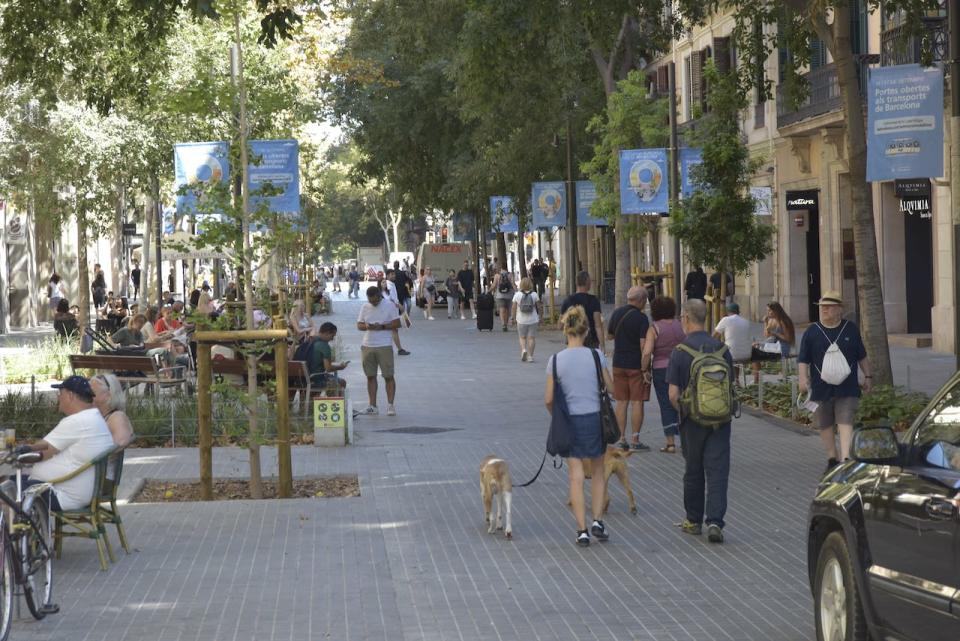The key to solving loneliness and pollution might be giving up cars and hanging out in the street. It's working in Barcelona.

Barcelona is a decade into transforming many of its streets into green, car-light public spaces.
The effort is admired by urban planners around the world and could be a model for US cities.
Americans are increasingly demanding dense, walkable, mixed-use neighborhoods.
Barcelona may have found an answer to a whole host of social, health, and environmental ills.
The city began implementing "superblocks" — "superillas" in Catalan — a decade ago as a way to cut air pollution. The project essentially limited through-traffic in a cluster group of nine square city blocks, creating greener and more pedestrian-friendly streets.
Early opposition to the pilot project soon gave way to widespread support as residents experienced the benefits of quieter, cleaner streets and intersections that functioned more as parks than thoroughfares. Since then, the model has been replicated in neighborhoods across the city.
The green spaces — which range from temporary seating areas to permanent playgrounds and other installations — have transformed streets for cars into plazas and linear parks. The idea is to cut noise and air pollution, get people to walk, bike, and exercise more, enhance social cohesion within neighborhoods, and build climate resiliency with cooler, greener streets, city officials say.
Superblocks feature people napping on benches, walking their dogs, or hanging at a cafe in in the middle of an intersection-turned-plaza. Kids run and bike freely — including in organized school bike squads. With a speed limit of 10 kilometers per hour (just over 6 mph), vehicles inside the green oases no longer threaten the peace and safety of residents.
Earlier this year, the city announced yet another major expansion of the project, with a goal of making a third of city streets green by 2030.
The Spanish city is far ahead of many of its peers when it comes to building walkable green spaces, but its efforts could be a model for cities around the world. Dense, walkable, mixed-use neighborhoods are increasingly in high demand in the US. And as Americans experience an epidemic of loneliness, a built environment that fosters social connection might be crucial for public health.
"It really goes beyond just a traffic-calming measure," said Sven Eggimann, an urban infrastructure researcher at the ZHAW School of Architecture in Switzerland. "This concept really tries to tackle noise, health, social space, urban greenery. I mean, you name it."
POV: You’re having a light lunch on a Barcelona Superblock. pic.twitter.com/C5hLzrmSmR
— Qagggy! (@Qagggy) November 25, 2023
People who live in communities with more walkable neighborhoods, shared space, greenery, and diverse types of housing, feel more socially connected and less lonely. This is in part because public spaces encourage both incidental interactions between strangers and acquaintances — so-called "weak" social ties — and spontaneous interactions between friends, both of which boost a sense of belonging and connection.
And research has found that noise pollution is tied to mental health conditions like sleeplessness and depression, while air pollution is associated with dementia and strokes.
Superblocks create accessible and, crucially, free "third places" — gathering spaces outside of home, work, and school — that are key to fighting loneliness.
Superblocks are "destinations," said Tayana Panova, a researcher who studies the built environment's effects on mental health. "You don't have to be moving through them. You can stop there, and rest, and connect and play, and just enjoy life."

 Yahoo Autos
Yahoo Autos 